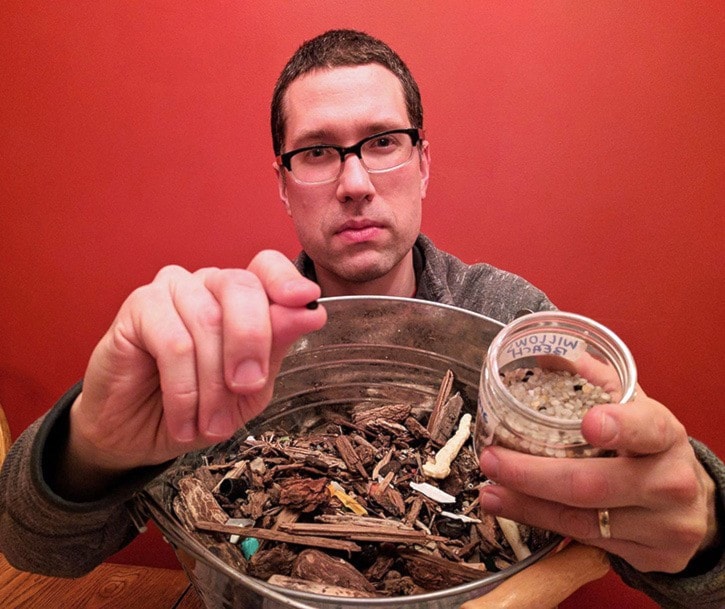Perplexed by the growing presence of nurdles on South Island beaches, a group of University of Victoria academics have made a few significant breakthroughs in a short matter of time.
With a pair of librarians at the lead, the group includes UVic geography and chemistry students who are intrigued by the tiny plastic pills which are shipped by boat and train around the world and are the base product of what becomes consumer plastic.
Speaking on the matter at Ideafest are David Boudinot, UVic business librarian, and Daniel Brendle-Moczuk, UVic geospatial librarian, at 2 p.m. Monday in the McPherson Library (room 129). Ideafest runs from March 6 to 11 with more than 40 events mostly at UVic but also off campus.
Through some basic testing, the chemistry students were able to establish what type of plastic nurdles are showing up on Oak Bay’s Willows Beach as well as several Saanich beaches such as Cadboro Bay and Ten Mile Point, Boudinot said.
Most importantly, they were also able to establish what the plastic nurdles are not, which is from a famous 2012 sea freighter spill in Hong Kong that released 150,000 kilograms of nurdles into the ocean. Nurdles from that spill have shown up in England, and speculation was they had made it here too.
“We learned the pellets from the Hong Kong spill were polypropylene pellets [No. 5],” Boudinot said. “We are finding polyethylene [No. 1 and 2] on our beaches.”
That means some are possibly coming from Joffre, Alta., home of Nova Chemicals.
“It’s possible that the spills are happening all the time in small instances the same as small gas or oil leaks,” Boudinot said. “For example, if they get into a city’s storm drain, they actually float through it and make their way to the ocean because stormwater systems are designed to filter out heavy items.”
The risk with the nurdles, which are less than one millimetre in width, is how they make their way into the food chain. For starters, they look a lot like fish roe.
“Nurdles aren’t [just] a Pacific Ocean problem, it’s in all of the oceans and it brings into question our societal dependence on plastic,” Boudinot said.
Boudinot came across the nurdle situation after volunteering on a regular beach cleanup organized the Vancouver Island chapter of the Surfrider Foundation. He became so taken with the amount of plastic at Willows, he can’t take his two children to the beach without at least doing a two-minute beach clean, a growing movement popular in England with its own social media hashtag.
During the group’s observation visits they used a 10-litre pail as a sample. Boudinot then spends up to a half an hour at a time sifting the nurdles and other plastic through three different-sized homemade screens.
View the full Ideafest schedule here.
